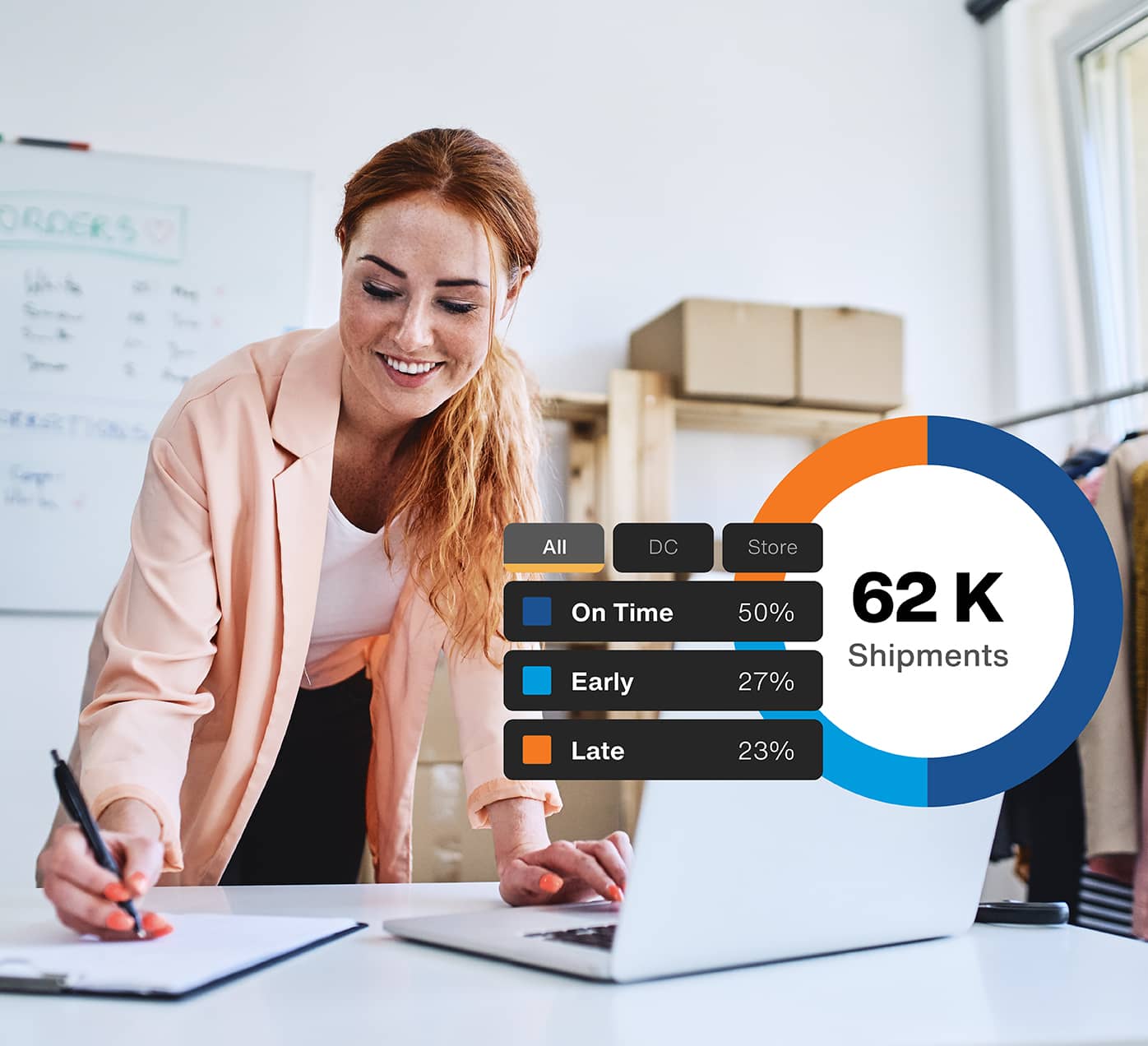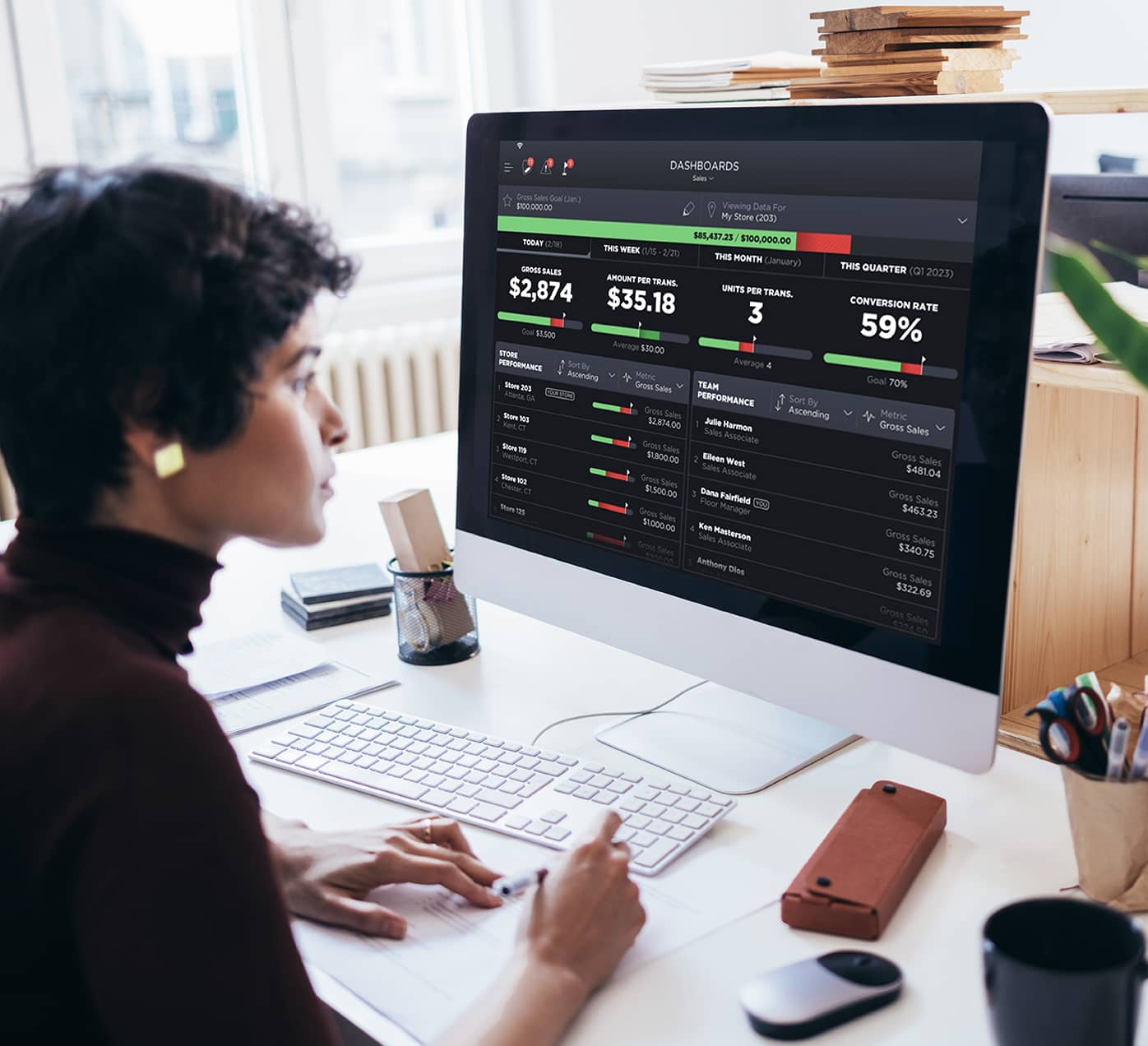Modern Stores Are Insight-Driven
Store performance insights are the last but not least of the five essential elements of creating modern store experiences. Utilizing comprehensive insights to continually enhance operations is standard practice in modern stores.
Prioritizing Continuous Improvement Using Rich Insights
Store performance is critical to a modern retail business's bottom line. Advanced strategies for enhancing selling, personalizing customer interactions, and executing fulfillment can increase store team productivity and elevate the shopper experience, driving sales and profits.
Understanding store performance is essential to continuously improving productivity and experiences. Modern stores that utilize rich sales, along with operational and competitive insights, can drive meaningful strategic and operational changes that build customer trust and loyalty and improve process efficiency and accuracy. Prioritizing data analytics in stores can make all the difference in achieving success and staying relevant in the eyes of modern shoppers.
Empowering Your Store Team With Insight
Understanding store performance is crucial in modern stores. Store managers must quickly and consistently evaluate performance against various key performance indicators (KPIs) and make operational adjustments to improve productivity, process accuracy, and customer service.
However, store associates also play a vital role in continuous store performance improvement. They can benefit significantly from insights that help them serve customers better and execute store tasks efficiently. Retailers can reap business benefits from a front-line workforce empowered with insights to influence strategic and operational decisions.
Trustworthy insights assist store teams in making data-driven decisions to resolve issues and improve performance. Store teams can fully leverage real-time insights to track changes in customer behavior, gauge sales, monitor productivity, and manage customer commitments. Providing managers and associates with the right insights brings opportunistic decision-making closer to customers.

Outcomes of Empowering Store Teams With Insights
-

Improved Employee Engagement
Empowering employees with insights to make decisions can foster greater employee engagement in their work, helping to improve performance.
-

Increased Productivity and Accuracy
Greater insights into task performance and store results can influence operational improvements, increasing productivity and accuracy.
-

Enhanced Customer Experience
By providing store teams with more comprehensive and real-time insights, they can make informed decisions that enhance the customer experience.
"Less than one quarter (24%) of organizations say they currently have a truly empowered workforce and 86% agree their frontline workers need better technology and more insight to be able to make good decisions in the moment."

Simplifying Use of Insights
Eliminating barriers to store insights can drive improved decision-making. When users can view insights within the applications used to perform their work, they are likelier to adopt and use insights. This approach streamlines insight usage and makes it a part of the daily work routine.
Data visualization is also an effective way to improve the use of insights. Users can quickly identify patterns in key performance areas and highlight meaningful alerts and trends by viewing insights through graphs, charts, and maps. This improved understanding helps store teams make informed decisions that reduce costs, increase sales, influence quality improvements, and accelerate process efficiencies. Visual analytics simplify the understanding of data and offer actionable insights, making it easier to make informed decisions and improve all aspects of store performance.

Outcomes of Simplifying the Use of Insights
-

Increased User Adoption of Data Insights
Easier access to and understanding of insights increases the likelihood of user adoption, broadening the use of insights in store operations.
-
Better Employee Engagement
Empowering associates with insights to make decisions can foster employee engagement in their work, helping to improve store performance.
-

Improved Store Performance
More extensive use of data insights can identify opportunities for store teams to improve store performance and enhance the customer experience.
"50% of survey respondents mention data visualization as the main reason why retailers are investing in analytics."

Benchmarking Performance with Comparative Insights
In the ultra-competitive retail industry, retailers need to go beyond internal-centric performance insights and benchmark their performance against competitors to identify additional opportunities for improvement.
Comparative insights are a strategic tool that significantly benefits retailers aiming to enhance their performance and competitiveness. It helps identify industry best practices and standards, allowing retailers to understand their relative position in the market. For instance, by analyzing competitor store fulfillment performance, retailers can uncover areas where they are underperforming and identify opportunities for improvement, such as improving on-time pickup performance.
By benchmarking performance against competitors, retailers can clearly understand their strengths, weaknesses, and differences. This information will help them to confidently drive meaningful changes in store performance, such as adjusting labor allocation to improve store fulfillment performance and stay ahead of competitors' fulfillment performance.
Outcomes of Leveraging Comparative Insights
-

Competitive Advantage
Retailers using comparative insights can make faster, more informed decisions to improve positioning and performance against competitors.
-

Enhanced Customer Experience
Retailers can use comparative insights to identify opportunities to improve the customer experience compared to competitors.
-

Improved Data-Driven Decision-Making
Competitive benchmarking enhances store performance insights and gives retailers deeper insights to make critical improvement decisions.
"Data and analytics leaders have tools and processes in place to identify key trends and prioritize those with the biggest potential impact on their competitive advantage.”

Contact Us
Ready to Make Your Store Insights-Driven?
Leverage rich store performance and competitive insights to continuously improve associate productivity and customer experiences.
5 Steps to Creating Modern Store Experiences
Unlock the store experience today's customers desire by digging deeper into each essential component of a successful Modern Store.

Empowered Associates
Store Associates, empowered by insight and technology, adeptly orchestrate modern store experiences.

Seamless Selling
Shoppers enjoy seamless purchases enhanced by omnichannel ordering, fast checkout, and flexible payments.

Personal Retailing
Personalized engagement delights shoppers with individualized attention, expert advice, and elevated service.

Store Fulfillment
Fast and reliable order pickup or shipping from stores fulfills modern shoppers' need for immediacy.




